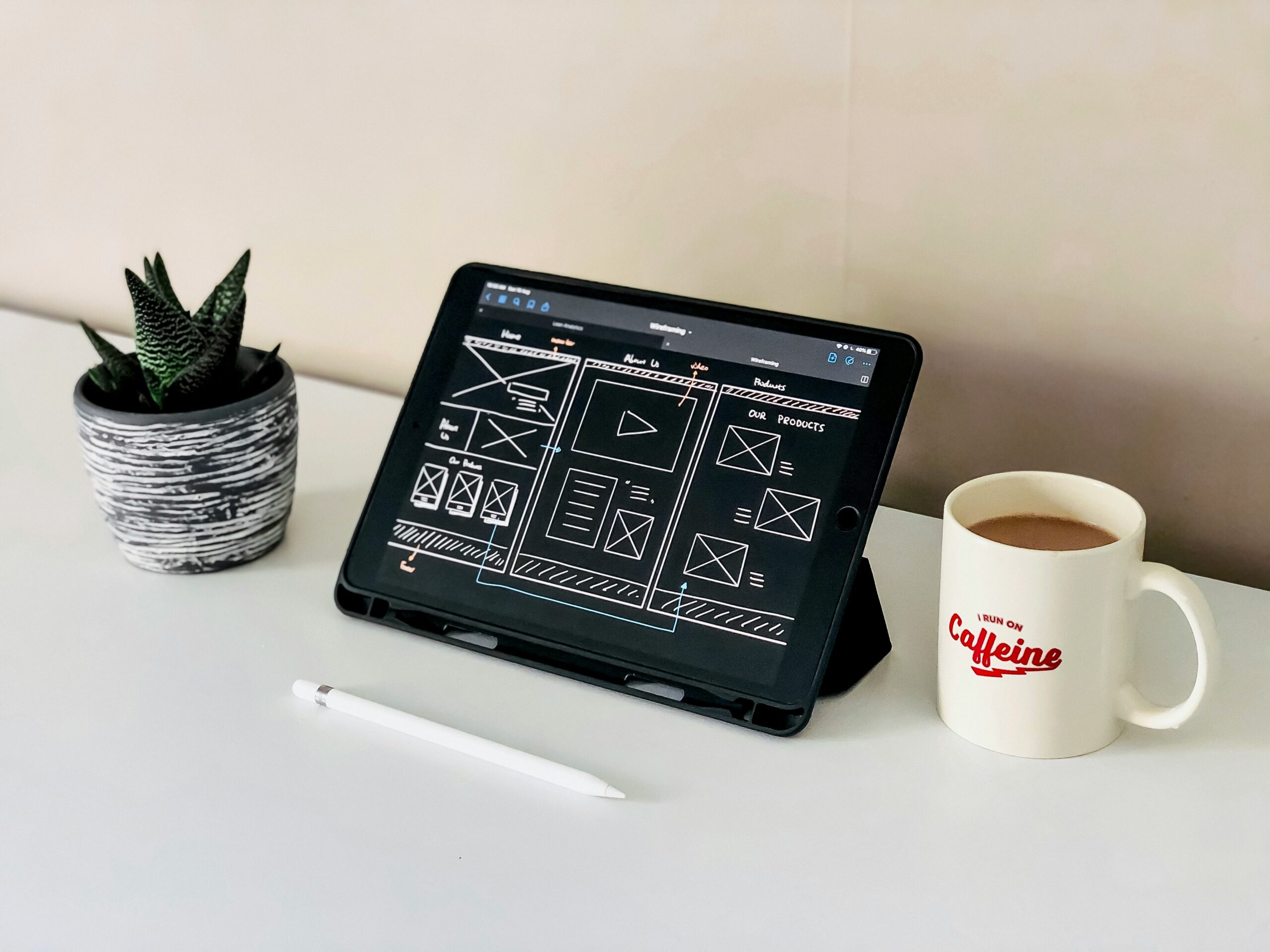In today’s digital landscape, many businesses struggle to keep their websites user-friendly across all devices. Did you know that over half of web traffic comes from mobile technology? This blog post will cover essential strategies for effective, responsive web design, including core elements, mobile-first experiences, and practical tools. By understanding these strategies, businesses can improve customer engagement, enhance their online presence, and address common issues related to server performance and adaptive web design. This content aims to provide actionable insights, helping businesses create seamless user experiences.
Key Takeaways
- responsive web design adapts websites for various devices, enhancing user experience significantly
- fluid grids ensure layouts adjust smoothly to different screen sizes for effective navigation
- utilizing mobile-first principles prioritizes usability and improves accessibility for mobile users
- testing across multiple devices helps prevent usability issues and enhances overall user satisfaction
- emerging technologies like AI and voice search are reshaping design strategies in 2024
Understanding Responsive Web Design Strategies

In 2024, responsive web design will be essential for creating web pages that adapt to various devices. This approach enhances the user interface by optimizing for different heights and landscapes, ensuring every brand reaches its audience effectively. The following sections will highlight the key benefits and practical elements of responsive design, providing insights for successful implementation.
Defining Responsive Web Design for 2024
Responsive web design for 2024 emphasizes a flexible methodology that allows websites to adjust seamlessly across various devices, including desktops and mobile web platforms. This approach uses percentages instead of fixed widths to ensure layout adaptability, enhancing user experience. Furthermore, incorporating responsive design into a workflow is vital for improving search engine optimization, as search engines prioritize sites that provide a consistent browsing experience across all devices.
Key Benefits of Responsive Web Design
The key benefits of responsive web design include improved user experience and increased web traffic. By creating a user interface that adjusts to any device, businesses can connect with audiences more effectively, whether they are using desktop computers or mobile apps. Implementing a responsive approach not only enhances accessibility but also plays a significant role in optimizing search engine results, which leads to more visitors and potential customers.
Core Elements of Successful Responsive Web Design

Implementing core elements in responsive web design enhances user experience and search engine performance. Fluid grids allow for flexible layouts that adapt to various dimensions, while responsive typography strategies ensure readability across devices. Additionally, optimizing media queries helps achieve scalability, making websites functional on any platform. Each of these strategies plays a vital role in a successful, responsive design approach.
Importance of Fluid Grids
Fluid grids are a fundamental aspect of successful,l responsive web design because they enable websites to adapt smoothly to different screen sizes, particularly on mobile devices. By utilizing a grid system that employs relative units like percentages, designers can maintain a clear visual hierarchy, ensuring content remains organized and easy to navigate. This approach enhances the user’s ability to scroll through the site efficiently, whether they are using a touchscreen or a traditional mouse. It supports effective drag-and-drop features that improve interactivity.
Utilizing Flexible Layouts
Utilizing flexible layouts is key to achieving successful, responsive web design. Designers can address complexity by creating a prototype that adjusts across various devices while maintaining readability. Progressive enhancement is an effective approach that prioritizes essential content and features, ensuring a smooth user experience even with emerging technologies.
- Create a flexible layout prototype.
- Focus on readability across devices.
- Implement progressive enhancement for essential content.
- Adapt to new and emerging technologies.
Responsive Typography Strategies
Responsive typography is a vital part of effective responsive web design as it ensures text remains readable across various devices. By using media queries, designers can modify font sizes and styles based on the screen dimensions, enhancing the end-user experience. Additionally, incorporating techniques like image scaling ensures that text elements do not overlap with buttons or other interactive features, maintaining a clean and organized layout.
- Utilize media queries for adjusting font sizes.
- Prioritize readability across different screen sizes.
- Implement image scaling for a balanced content layout.
- Enhance interactivity by ensuring buttons are easily accessible.
Optimizing Media Queries for Various Devices
Optimizing media queries is crucial for responsive web design, allowing developers to apply different styles based on the viewport’s size. By defining breakpoints in the style sheet, designers can ensure that the layout adjusts appropriately for various devices, including smartphones and tablets. Using HTML5, developers can create fluid and adaptable designs that maintain a consistent user experience across all platforms, effectively addressing users’ needs.
Designing for Mobile-First Experiences

Adopting mobile-first principles is essential for responsive web design, ensuring that web content is tailored for small screens before scaling up to larger formats. Crafting intuitive navigation enhances user experience on mobile devices, making it easier for users to access content. Optimizing images for mobile devices improves load times, aligning with web content accessibility guidelines to create a seamless experience across all platforms.
Adopting Mobile-First Principles
Adopting mobile-first principles is crucial in web development, as it emphasizes designing with mobile usability in mind first. This approach ensures that navigation remains intuitive and content is easily accessible on smaller screens. Research shows that most users access websites via mobile devices, making it essential to create smooth experiences using tools like Webflow, which allows for seamlessly scaling designs from mobile to desktop.
Crafting Intuitive Navigation for Small Screens
Crafting intuitive navigation for small screens is essential for enhancing user experience on mobile browsers. This process involves creating menus that are easy to interact with using touchscreen devices, ensuring users can quickly find what they need without frustration. Keeping typography large and clear improves accessibility, allowing users to navigate seamlessly from their mobile devices to desktop computers.
Optimizing Images for Mobile Devices
Optimizing images for mobile devices is crucial in creating responsive web designs that load quickly and look great on any screen. By using the right formats, such as JPEG or WebP, designers can reduce file sizes without sacrificing quality, ensuring fast loading times for users. Additionally, implementing responsive images that adjust their resolution based on the viewer’s device helps maintain clarity and enhances the overall user experience.
Practical Tools for Responsive Web Design

Developers and designers can use several practical tools for effective, responsive web design. Top frameworks provide robust structures for creating adaptable layouts. Leveraging no-code solutions simplifies the design process, making it more accessible. Additionally, prototyping tools allow for testing and refining responsive features before actual deployment. Each of these topics will offer valuable insights into enhancing web design strategies.
Top Frameworks to Consider
Popular frameworks like Bootstrap, Foundation, and Tailwind CSS stand out for their utility in responsive web design. These frameworks offer pre-built components and grid systems that simplify the process of creating flexible layouts. With user-friendly features, designers can quickly implement responsive strategies, ensuring websites function well on various devices and improving overall user experience.
Leveraging No-Code Solutions for Effective Design
Leveraging no-code solutions allows businesses to create responsive web designs without extensive coding knowledge. These platforms, like Webflow and Wix, offer intuitive drag-and-drop interfaces that simplify the design process. By using these tools, developers and small business owners can quickly build adaptable websites, ensuring a smooth user experience across all devices while saving time and resources.
Utilizing Prototyping Tools for Responsive Design
Utilizing prototyping tools for responsive design can significantly enhance the web development process. These tools, like Figma and Adobe XD, allow designers to create interactive mockups that simulate how a website looks and functions across different devices. By testing layouts and user interfaces before deployment, developers can address potential issues early, ensuring a smoother user experience and improved engagement once the site goes live.
Accessibility and Inclusive Design in Responsive Web Design

Ensuring compliance with accessibility standards is vital for creating inclusive web designs. This involves implementing strategies that enhance user-friendly experiences for all individuals, including those with disabilities. The following sections will outline key methods for meeting accessibility guidelines and practical approaches for designing websites that provide easy navigation and clarity for every user.
Ensuring Compliance With Accessibility Standards
Ensuring compliance with accessibility standards is essential for creating responsive web designs that serve all users effectively. Utilizing guidelines such as the Web Content Accessibility Guidelines (WCAG) helps developers incorporate features like text alternatives for images, keyboard navigation, and adaptable color schemes. By focusing on these aspects, websites not only become more inclusive but also improve their overall user experience for everyone:
- Implement text alternatives for visuals.
- Ensure keyboard navigation is available.
- Adapt color schemes for visibility and readability.
Strategies for Creating User-Friendly Experiences
Creating user-friendly experiences in responsive web design involves prioritizing ease of navigation and accessibility for all users. By designing websites with clear labels and intuitive layouts, businesses can ensure that users quickly find the information they seek, regardless of their device. Incorporating features such as adjustable font sizes and screen readers allows individuals with varying needs to engage comfortably, enhancing overall satisfaction and keeping users coming back.
Future Trends Influencing Responsive Web Design

The landscape of responsive web design is constantly evolving. Emerging technologies like AI and voice search are reshaping design strategies. Understanding user behavior shifts in 2024 is crucial for creating effective websites. The following sections will explore how these trends influence design choices and provide practical insights to stay ahead in responsive web design.
The Impact of Emerging Technologies on Design
Emerging technologies significantly influence responsive web design by introducing new ways to enhance user experience. With advancements in AI, websites can now adapt more intelligently to user preferences, creating an individualized browsing experience. Additionally, voice search capabilities require designs that account for conversational queries, making it essential for businesses to rethink their navigation and content layout to remain accessible and engaging across all platforms.
Anticipating User Behavior Shifts
Understanding user behavior will be crucial for effective, responsive web design. With a growing reliance on mobile devices, users expect swift access to information and seamless navigation. Designers must anticipate these shifts by prioritizing faster loading times and clear layout structures, ensuring that their websites cater to the evolving needs of users seeking efficiency and ease of use.
Conclusion
Effective, responsive web design is crucial for meeting the diverse needs of users across various devices. Businesses enhance user engagement and satisfaction by implementing strategies like fluid grids, mobile-first principles, and responsive typography. Prioritizing accessibility and usability ensures that websites serve all individuals, fostering inclusivity. Adopting these top strategies boosts online visibility and drives traffic and potential revenue, making them essential for success in today’s digital landscape.
